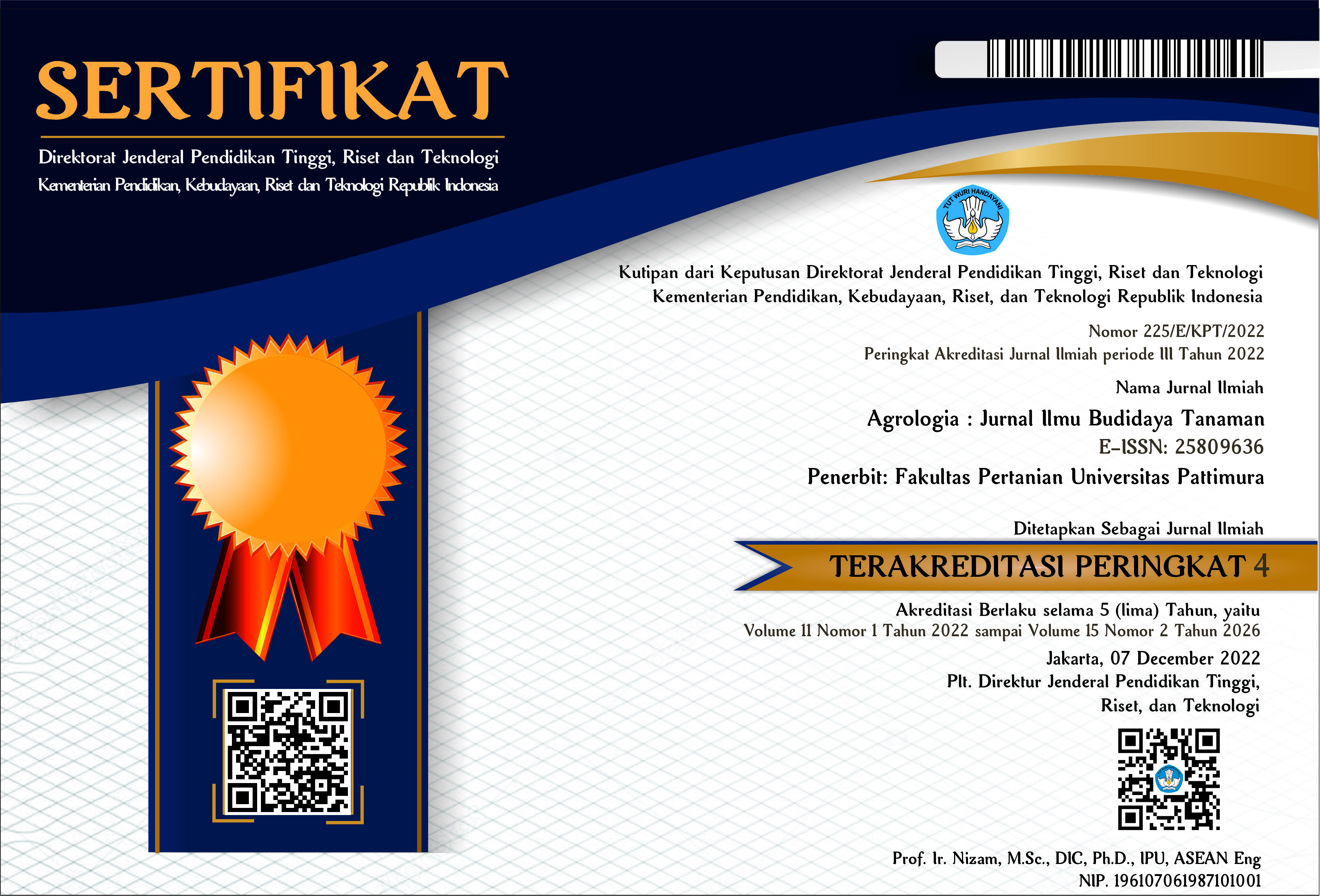Populasi Bakteri Dan Jamur Pada Rizosfer Caisim (Brassica juncea L.) Yang Ditanam Di Tanah Dikontaminasi Insektisida Organoklorin Setelah Aplikasi Konsorsia Mikroba Dan Kompos
Abstract
Organochlorine insecticide was banned for agriculture but nowadays its residue was still found in some agricultural soil. One of ways to lowering organochlorine residue in soil is by used of degrading-organochlorine microbial consortia accompanied with compost application. However, application of exogenous microbes might affect bacterial and fungal population in soil. The pot experiment has been set up to verify the influence of Pseudomonas mallei and Trichoderma sp. and compost on total bacteria and fungi on rhizosphere of Cai Sim (Brassica juncea L.) grown on Andisols which were contaminated with organochlorine insecticide of heptachlor, endosulfan, dieldrin and DDT. Experimental design was Factorial Randomized Block Design with three replicates. The first factor was microbial consortia of P.mallei and Trichoderma sp., and the second one was kind of compost. The result showed that effect of microbial consortia on total bacteria population was determined by kind of compost. Total bacterial population in rhizosphere of Cai Sim grown with cow manure compost and microbial consortia was more increased. However, microbial consortia as well as any kind of compost did not influence total fungal population in Cai Sim rhizosphere. In this experiment, total bacterial and fungal population in rhizosphere reached 109 cfu g-1 and 104 cfu g-1 respectively, indicating that major microbial population in rhizosphere was in the normal range.
Full Text:
PDFDOI: http://dx.doi.org/10.30598/a.v3i2.246
Refbacks
- There are currently no refbacks.











